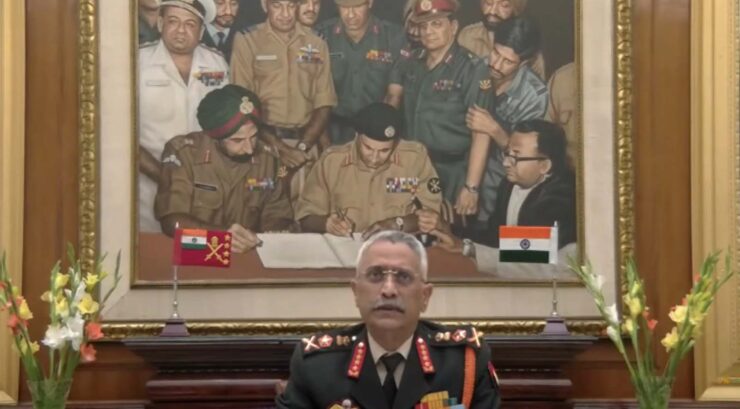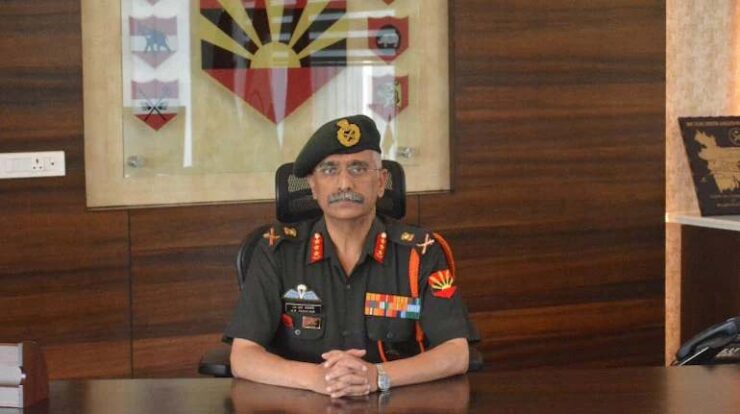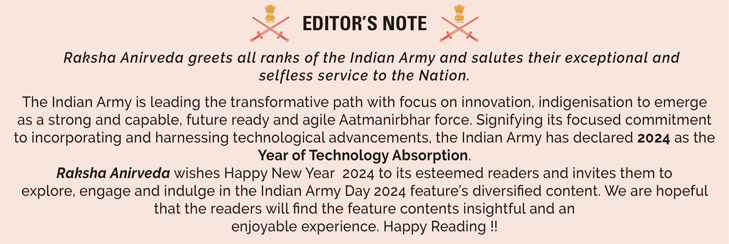
Army Chief General M.M. Naravane said the Integrated Capability Development System (ICADS) promulgated by the Headquarters of Integrated Defence Staff (HQ-IDS) is being formulated and after completion of the five stage process, it will be Integrated Capability Development Plan (ICDP).
The ICDP was the ambitious project that was being drawn up by the country’s first Chief of Defence Staff (CDS) General Bipin Rawat who was heading the newly created Department of Military Affairs (DMA) and tragically died in a helicopter crash leaving the work incomplete.
The ICDP was to form the foundation of the procurement plans of the three wings of the defence forces – Army, Navy and Air Force. The successor to General Rawat would have to take forward this project and how he does it remains to be seen. General Naravane is due for retirement this year and according to reports he is likely to be the next CDS.
One of the key recommendations of experts headed by Lt General D.B. Shekatkar in 2015 was that the first two CDS should be from the Army. In the present day scenario, one of the key factors weighing in favour of General Naravane to be appointed as the CDS is he is due for retirement this year and the prevailing tension along the borders with China and Pakistan. So surely it would be smoother for the implementation of the plans in that case for after the ICDP, it will be the five year Defence Capability Acquisition Plan (DCAP).
“We are still at the ICADS stage. It is quite different from Long Term Integrated Perspective Plan or LTIPP, which was bottom up approach which did not have the required degree of synergy, consideration and collaboration between the services. And this new system will be top down. First we will see what are the threat and capabilities which need to be achieved and then what are the ways and means to acquire them. So we will be acquiring in the coordinated manner,” General Naravane said.
The year 2022 appears to be a promising one for India’s defence capabilities.
The late Gen Rawat had been without much fanfare silently drawing up a new Integrated Capability Development Plan or ICDP — which would have formed the foundation of the procurement plans of the Army, Navy and the Air Force. This review of the ICDP will have implications on the long-term procurement plans of the three forces.
The new ICDP that was being worked upon by the CDS was even more important in the backdrop of annual capital allocations, as pointed out by experts earlier. Former defence secretary G. Mohan Kumar wrote in this 2019 article in The Economic Times: “The armed forces’ 15-year Long Term Integrated Perspective Plans (LTIPP) — the mainstay of their modernization programme — remains an ambitious paper exercise without any realistic link to the annual capital allocations.”
So, it is important to have a realistic review of the procurement plans of the three Services. Rather than pumping money into systems that are capital-intensive and not relevant to future warfare, India should invest in emerging technology.
Despite the pandemic, the current year appears to be a significant one for the country’s march towards its goal of Atmanirbhar in military industrial complex — and becoming a global defence manufacturing hub. With the government focusing on its determination to have a leaner and meaner military, the year past saw efforts gathering steam to modernise the Indian Army, the Indian Navy, and the Indian Air Force, with a two-pronged approach: military reforms, alongside the hastening of weapons acquisition, and upgrades in the three services.
With the country facing challenges on two fronts – Northern and Western – as also across the sea and air, the nation’s armed forces are under pressure financially and materially, its defence planners have an unenviable task in speeding up military reforms while simultaneously balancing the budget.
In the prevailing scenario, the need of the hour is to restructure the military with the focus being on long overdue defence reforms, aiming to create a viable force structure by enhancing inter-service communication and interaction. The Defence Ministry seeks to achieve this through establishing integrated theatre commands — a concept that many governments toyed with in the past, but never had the will to implement.

The exercise to have Theatre Commands appears to be on the anvil though its forward movement appears to be on temporary hold till the appointment of the CDS who will be heading the DMA and take forward this exercise of integrating the three services, and synergising their operations in the terrestrial, aerial and oceanic domains.
Fortunately, innovative ideas are redefining the way the armed forces manage their resources. In this regard is the new defence procurement process called the Integrated Capability Development Plan that uses intra-service and inter-service financial mapping and prioritisation to determine essential acquisitions. This involves data crunching making it easier for policy-makers to earmark sufficient resources for the military while finding a balance against competing demands in other sectors such as health or agriculture.
Having pegged India’s defence production mark at an ambitious $25 billion in the next four years (which includes military exports of $5 billion), the government has introduced several schemes to ramp up local manufacturing, thereby avoiding shopping abroad. This will help the country reach its target of 75 percent ‘atmanirbharta’ or self-reliance in defence equipment manufacture before this decade is out.
However, to boost indigenisation in defence can only succeed with the active participation of industry, start-ups, and innovators. It has been seen that militaries across the world depend on private industry to bulwark their modernisation efforts, India too has increased the level of industry inputs in defence, and has opened the door wider to industry participation in the sector. Thus the Innovations for Defence Excellence (IDEX) launched by the government to work with academia, industry, and startups to innovate solutions for the military seems to be paying off handsomely. Nearly 200 startups are currently working on innovative defence technologies, and many of them have shown interest in using the IDEX platform to incubate and develop their ideas.
Military aerospace is another critical domain where several startups are involved in developing prototypes, products, and technologies. For far too long has the absence of aero-engines plagued India’s emerging defence ecosystem as all indigenously-produced aircraft are powered by imported engines. But this may be rectified soon if the Indo-French agreement to jointly build aero-engines in India takes off under New Delhi’s strategic partnership model — where Indian industry collaborates with foreign vendors. Safran, the French aerospace company which provides the fighter jet Rafale’s engines, is likely to partner with an Indian firm to manufacture the Kaveri engine for the Indian Light Combat Aircraft (LCA). The LCA currently uses GE Aviation engines.
Even as the country continues to reel under the new pandemic Covid variant Omicron which continues to play havoc with the nation’s health system, 2022 promises to be a watershed year for India’s goal of building a domestic military industrial complex — and becoming a global defence manufacturing hub.
– The writer is a senior journalist and media consultant. The views expressed are of the writer and do not necessarily reflect the views of Raksha Anirveda











